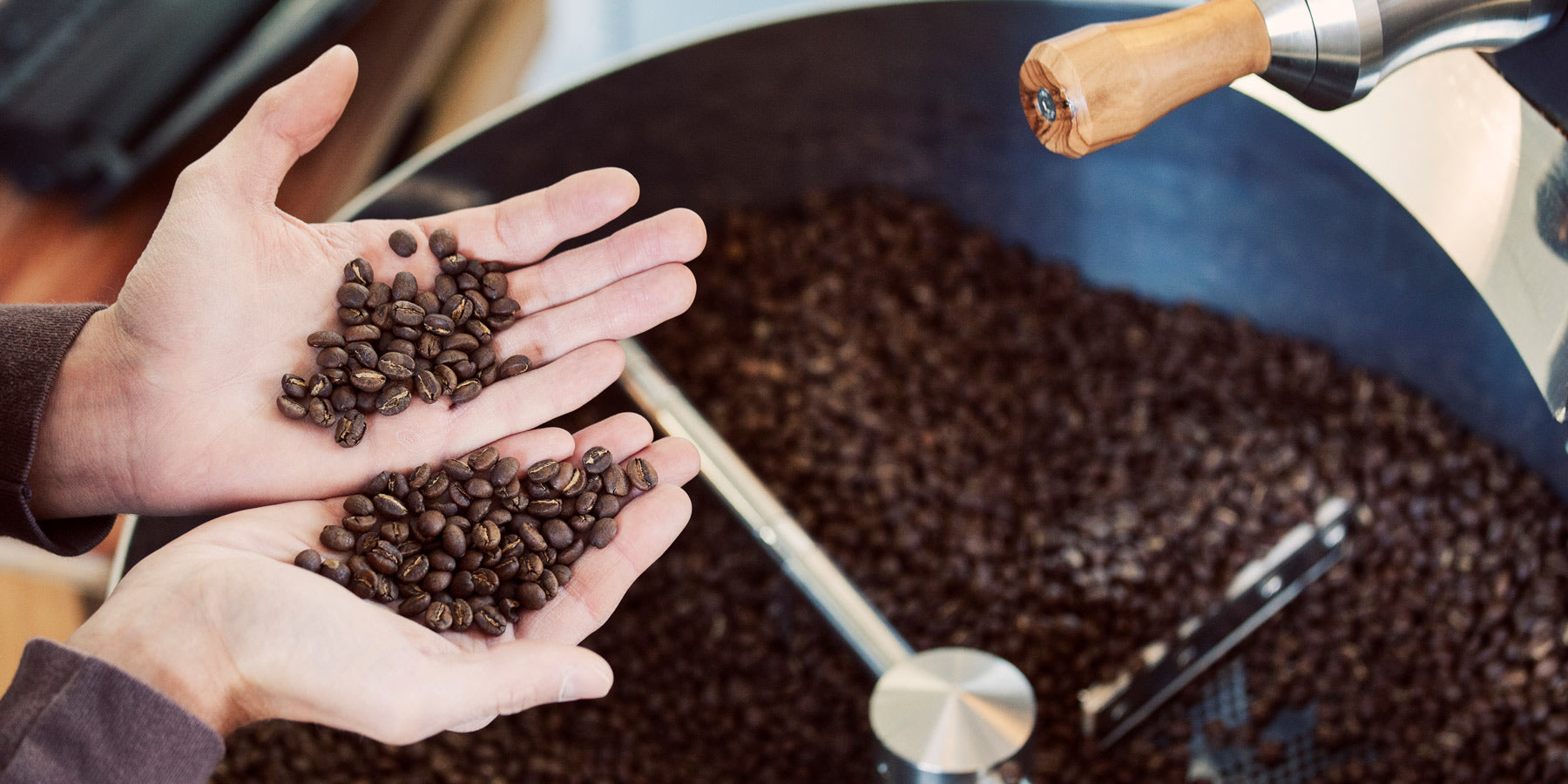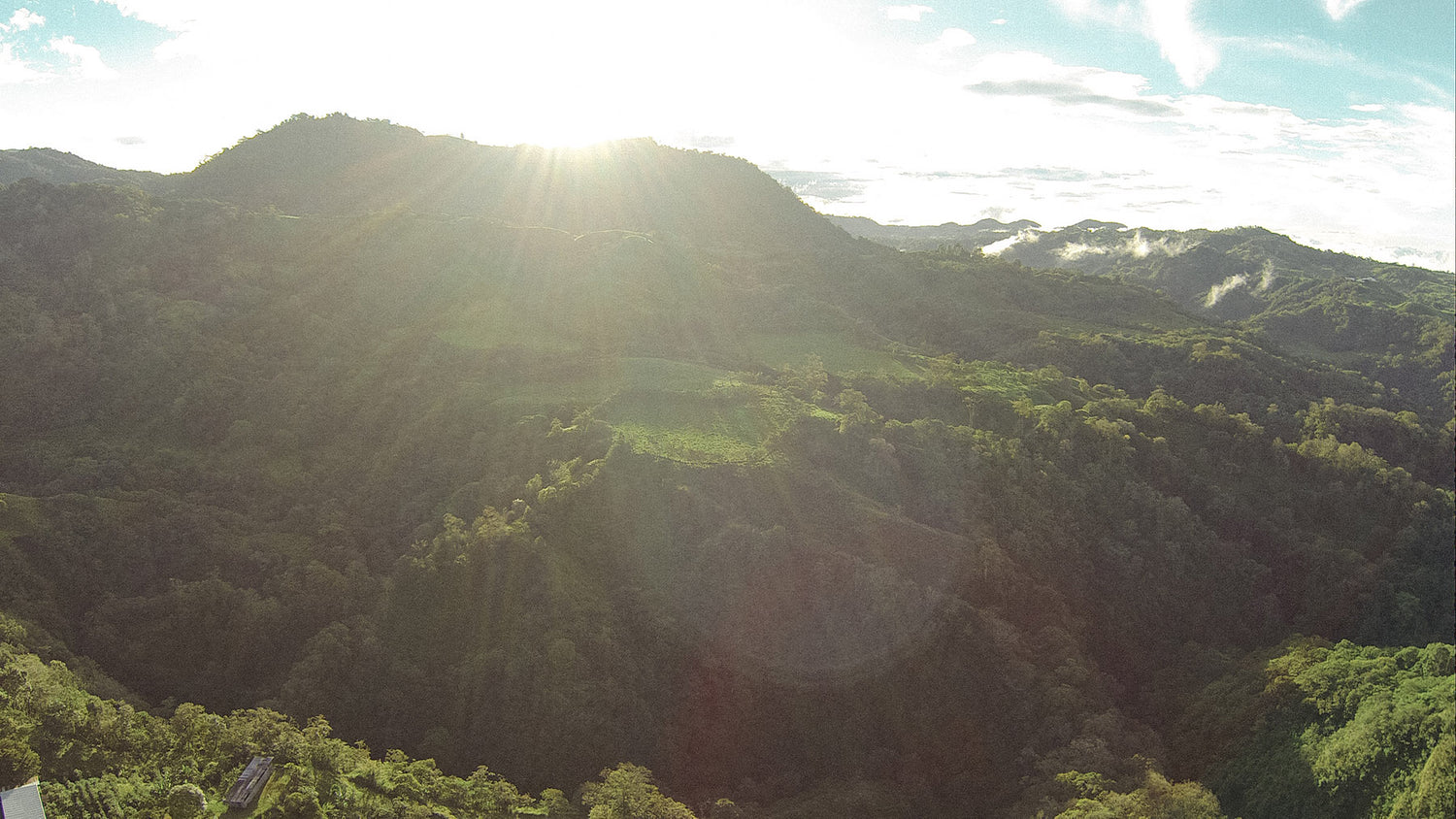In order to create a unique taste profile in your cup, the green coffee has to go through a few steps after harvesting. One of the most important is roasting the coffee! This step is of course carried out by us in the Wild Coffee Roastery and requires a lot of skill, patience, passion and of course experience. There are of course some differences in the roasting process , which we would like to present to you in this article. Unfortunately, most of the world's coffee still comes from large roasters who process their coffee using an industrial roasting process.
However, we at the Wildkaffee Rösterei are advocates of artisanal coffee roasting ! Artisanal roasting of coffee ensures that high-quality specialty coffee can perfectly develop its unique taste . We will explain the exact differences between the two roasting methods in the course of this article. We will also explain how coffee roasting works and which steps are involved in coffee roasting. Elias Fischbacher from the Wildkaffee Rösterei wishes you lots of fun discovering!
Coffee Roasting - Craft vs. Industry
In order to extract the delicious coffee flavor from the green coffee bean, a roasting process must be used. Unfortunately, most coffee on the world market is processed using the industrial roasting process . But that is not reprehensible. Nevertheless, coffee roasting in our roastery takes place exclusively using artisanal drum roasting ! Artisanal coffee roasting then ensures that the end result in your cup contains particularly finely nuanced notes and aromas ! Let's now compare the differences between artisanal and industrial roasting processes!
Industrial roasting process
When roasting coffee industrially, the beans are processed in a much shorter time because a higher temperature is used. The roasting process takes between 2 and 7 minutes and is carried out at a temperature between 400 and 800 degrees . The advantage of industrial coffee roasting in barrel roasters is the amount that can be processed in one day. Of course, this also pushes the price down, which unfortunately also has an impact on the quality of the coffee .
Due to the extremely high temperatures, parts of the bean tend to burn . It can also happen that the bean looks roasted on the outside but is still completely raw on the inside. In addition, the coffee must be cooled down quickly after roasting so that it does not "simmer" - in cooking this process would be called post-cooking. This simply means that it continues to roast after roasting and does not retain the desired degree of roasting. After roasting the coffee, the beans are therefore sprayed with water. This also ensures that the coffee develops slightly sour notes.
Artisanal roasting process
However, different rules apply when roasting coffee by hand . The green coffee is roasted particularly gently and over a longer period of time. When roasting coffee by hand , lower temperatures are used and the beans are given more time. This allows the beans to develop their excellent notes perfectly.
The artisanal roasting process takes 10 to 20 minutes and works at temperatures of around 220 degrees. After the coffee has been roasted, the beans are placed in a special sieve, where they are cooled to the desired temperature within a minute. This step ensures that the targeted roasting level is actually achieved, because even with artisanal coffee roasting, the beans could otherwise "overcook". In our roastery, we work with two roasters: the IMF RM60 and the Loring S35 Kestrel.

Brief summary of coffee roasting
In order to capture the whole thing and present it better, we have created a short summary for you and we remember with regard to the degree of roasting of coffee:
Roasting coffee – the roasting process!
When roasting coffee, the beans go through various phases that involve physical and chemical processes. Yes… roasting coffee is actually an art in itself and is almost like a science.
At the beginning of the roasting process, the green bean loses most of its remaining liquid content . This is why the beginning, i.e. the first phase of coffee roasting, is also known as the drying phase. The color of the coffee bean gradually changes; once it has taken on a yellowish tone, the Maillard phase begins . The carbohydrates and amino acids react with each other. The sugar molecules slowly begin to caramelize - melanoidins are formed, which are responsible for the bean taking on its familiar brown color. These 3 phases contribute significantly to the body and the excellent taste.
The temperature in the roaster and in the bean rises steadily. This means that the coffee is exposed to more and more pressure, as steam and carbon dioxide are created. If the bean can no longer withstand the pressure , then a slight cracking sound can be heard. In the technical language of coffee roasting, this is known as the first crack . Perhaps you have heard this term before?
After the first crack, the development phase begins! The name says it all, because this is when the complex flavors of the coffee develop. Each country's coffee now develops its typical notes. In order to preserve the unique flavor, the roasting process is stopped shortly after the first crack. Depending on the country of origin and variety, the coffee still has a relatively high acidity and fruity notes. Coffee from other countries also has sweet, berry notes. The longer the roasting process takes, the darker the beans become. The result is the chocolatey, nutty flavors that we expect in an espresso.

Coffee Roasting - Traditional Roasting
Did you know that a few years ago coffee was still roasted at home? Coffee was roasted in so-called roasting pans on the stove , which was fired with wood or coal. Coffee roasting at home was actually practiced until the 1950s .
The wonderful aroma that develops during the roasting process was widespread in residential areas at that time . However, the coffee was roasted too unevenly and some beans burned. Therefore, the coffee did not taste particularly good back then, compared to today. With the start of the economic miracle, however, in-house coffee roasting was phased out. From then on, coffee was roasted in large industrial roasters. The smaller ball roasters had existed before, but they were not nearly as established as they are today, for example!
Coffee Roasting - The Taste of Coffee
Anyone who expects that a one-time creation of a roasting profile is enough when roasting coffee is wrong! Coffee changes, just as our nature changes. The different harvests always taste different ! The aim of our roasting masters Hardi & Stalti is to get the best out of each individual type of green coffee .
The roasting process is supported by a computer-aided software called Cropster , which helps the roasting master to achieve a consistent roasting curve and thus a balanced taste. This is how we want to guarantee you perfect coffee enjoyment!

Conclusion!
Roasting coffee is not only a passion, but also a science. Objectively speaking, a variety of chemical and physical processes are associated with roasting coffee. It takes a lot of passion, patience, skill and of course experience to achieve a high-quality, excellent end result. When roasting coffee, three different phases are passed through: drying phase, Maillard phase and the development phase.
In short, in the first phase the coffee loses its remaining liquid , then it changes its color from green to a yellowish tone and finally to the familiar brown color. In the last phase, after the first crack, it develops its unique taste, in which the country-specific, tasty notes also develop. The result of a gentle, long-term roasting in a drum roaster is a particularly tasty coffee that shines with finely nuanced notes.


